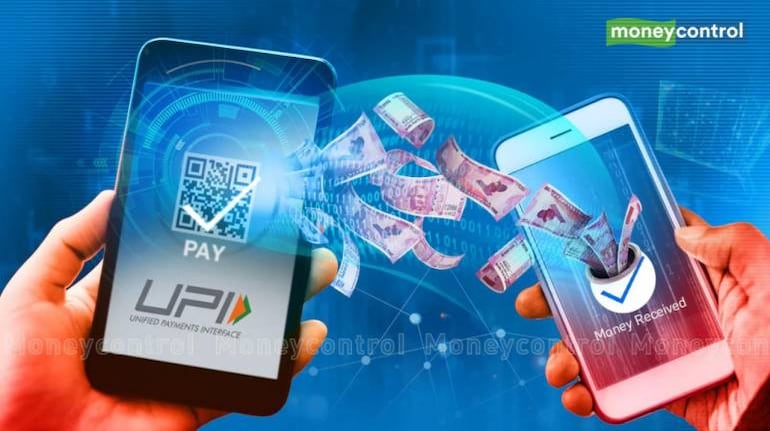



In July, the number of UPI transactions almost hit the 10 billion mark (9.96 billion to be precise), and the value of those transactions crossed Rs 15 lakh crore. This is more than ten times what credit cards achieved in over 30 years.
The National Payments Corporation of India (NPCI), which runs UPI, is now targeting one billion transactions a day, three times what it is doing now. That milestone seems to be only a couple of years away at the current annual growth rate of over 40 percent.
From what started as an inter-person money transfer system during the initial two-three years, UPI is increasingly driving commerce in the country, with around 57 percent of transactions now being merchant transactions.
The humongous growth is in no small measure powered by the ubiquitous QR code, which millions of merchants have adopted over the last two years. UPI is estimated to have over 330 million unique users and around 70 million merchants deploying over 256 million QR codes across the country.
The zero payment commission, called MDR (merchant discount rate), paid by merchants while using UPI has made it more attractive than point-of-sale (PoS) devices. Also, taking a printout of a QR code is inexpensive apart from saving the merchants monthly subscription charges.
Also read: Increased income levels in middle classes making us bullish on India, says Indian Bank MD & CEO
 India's UPI growth trajectory
India's UPI growth trajectory
Omnipresent
The impact and growth of UPI have been at the expense of cards in general and debit cards in particular. In fact, during the last year, debit card spending has declined by 20 percent, according to the RBI’s annual report.
UPI has increasingly started to corner a lot of different features that were hitherto card territory. In fact, it is now providing a wallet facility, the same product that it had displaced over the last few years.
Owing to complaints by banks that their core banking solution is being burdened by small-ticket transactions, NPCI has carved out a wallet within the UPI account or app and this also helps customers make small payments without a personal identification number (PIN), making such transactions faster and better.
Another feature that was available only on cards is EMI payments, which can be enabled on UPI. For utility payments and other recurring payments, the platform also lets customers use an Auto Pay mandates feature, which was the preserve of credit cards and net banking for a long time.
Recently, NPCI also introduced the merchant UPI Plug-in, which enables payments to be completed without exiting the merchant website or app. Opening a UPI app to complete a payment transaction can sometimes increase friction and the probability of failure.
The linking of credit cards to UPI will also help increase the penetration of credit in the payments ecosystem.
Rupay power
The advance of payment methods under NPCI has been so relentless that it has now threatened the chokehold of Visa and Mastercard in the card payments ecosystem.
Under the aegis of NPCI, India has also established a domestic card payment network, Rupay, which now dominates the debit card market.
However, 90 percent of the credit card market is still controlled by Visa and Mastercard. The lack of wide acceptance of Rupay internationally has restricted the success of these cards among the upwardly mobile segments of the population.
However, since it began linking Rupay credit cards with UPI, NPCI has issued 25 percent of all new credit cards in the country, indicating that the new initiative is helping the organisation break the duopoly. This facility brings the best of UPI and credit cards.
Another NPCI subsidiary, Bharat Bill Payment System (BBPS), has brought all utility payments, school fees, loan repayments and insurance premium payments under one single platform. While each and every bill payment app such as PhonePe, Paytm, Amazon Pay and Google Pay had to integrate each of the utility billers like electricity boards or mobile bill payments on their platform separately earlier, now they need to integrate their systems with the BBPS.
Also read: HSBC Mutual Fund chief recommends these 4 MF categories to first-time equity investors
India’s pride
Today, UPI is spoken of highly in international circles. India has signed partnerships with multiple countries to operationalise UPI payments in several Asian and European countries.
NPCI is also looking to channel a large part of the inward foreign remittances worth $90 billion every year through UPI, within the next decade or so. The RBI and central government are also trying to channel international trade in rupees, and UPI will make the money transfer much smoother.
The government is also trying to help developing countries build similar domestic instant mobile and card payment systems for goodwill. This will in turn help the Indian government make these systems interoperable with India’s systems such as UPI for international payments and transfers, and could displace Society for Worldwide Interbank Financial Telecommunications (SWIFT), which handles international bank transfers as of now, in the long run.
The recent blockade of Russian payments systems from using American networks such as Visa and Mastercard has made every country realise that a parallel domestic payment system is vital for survival.
Discover the latest Business News, Sensex, and Nifty updates. Obtain Personal Finance insights, tax queries, and expert opinions on Moneycontrol or download the Moneycontrol App to stay updated!